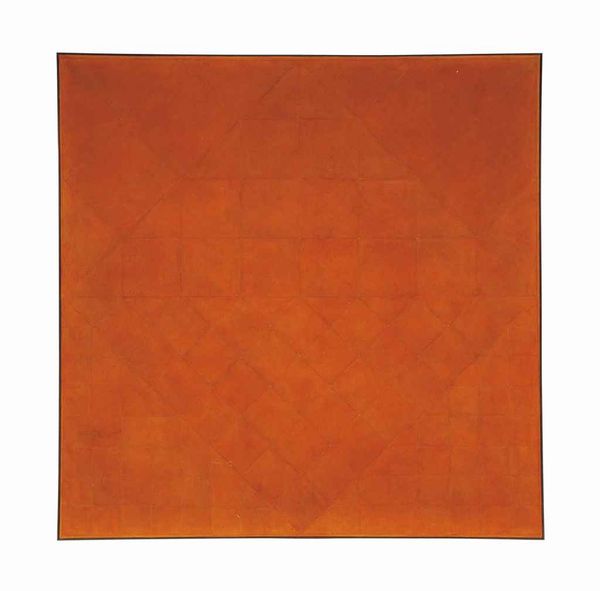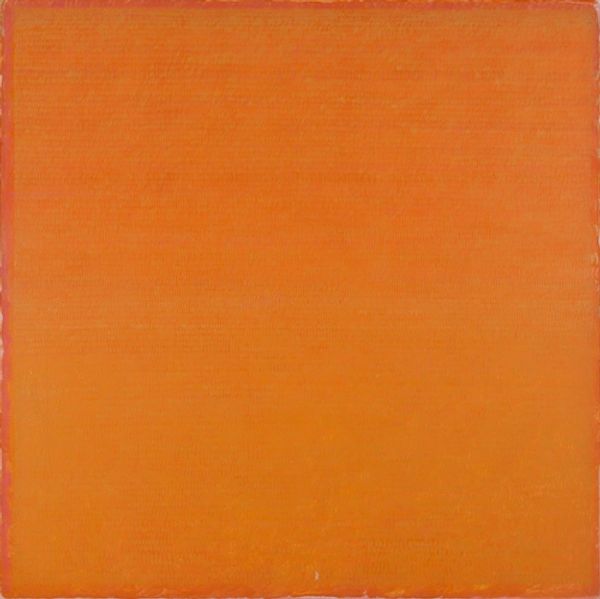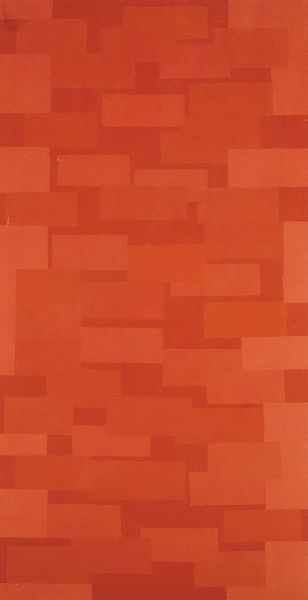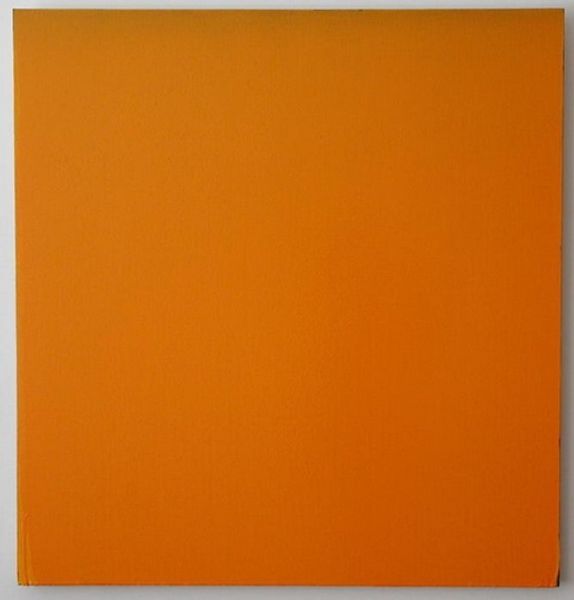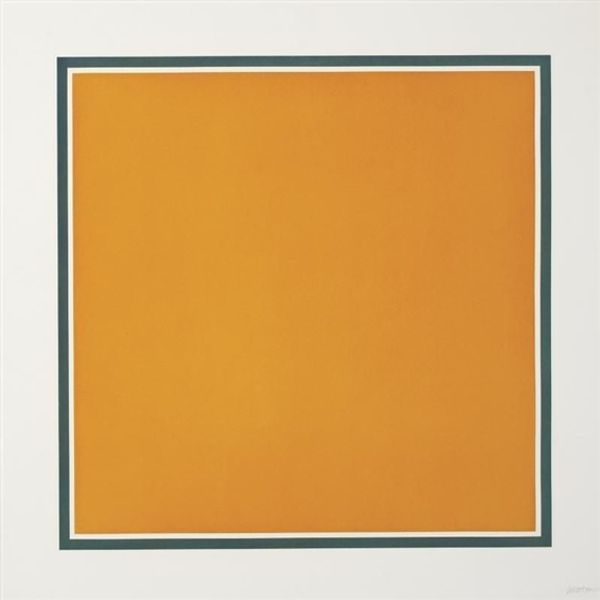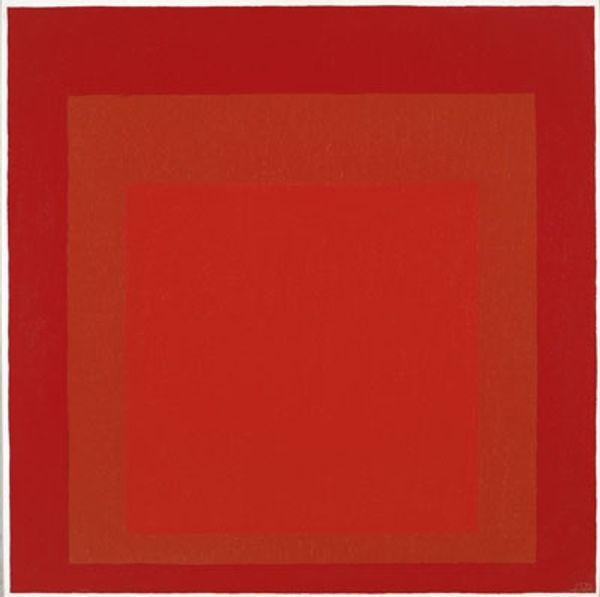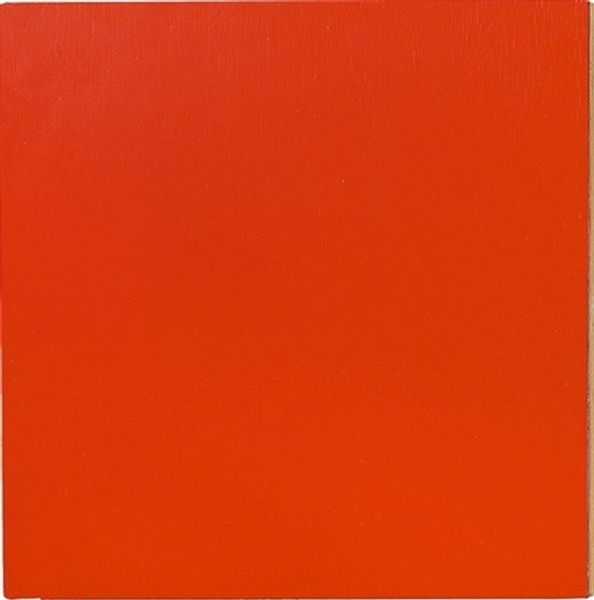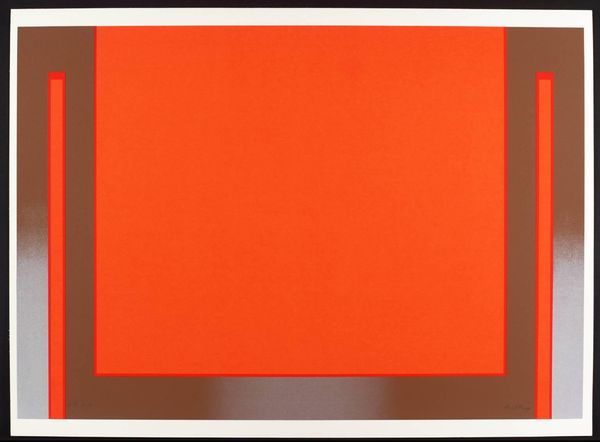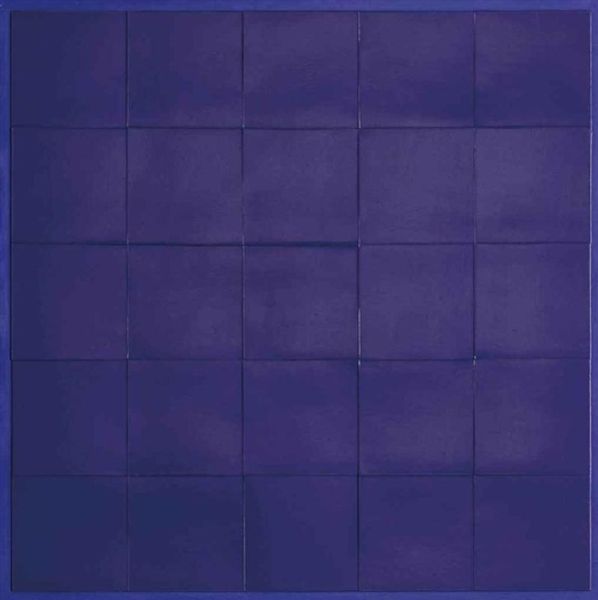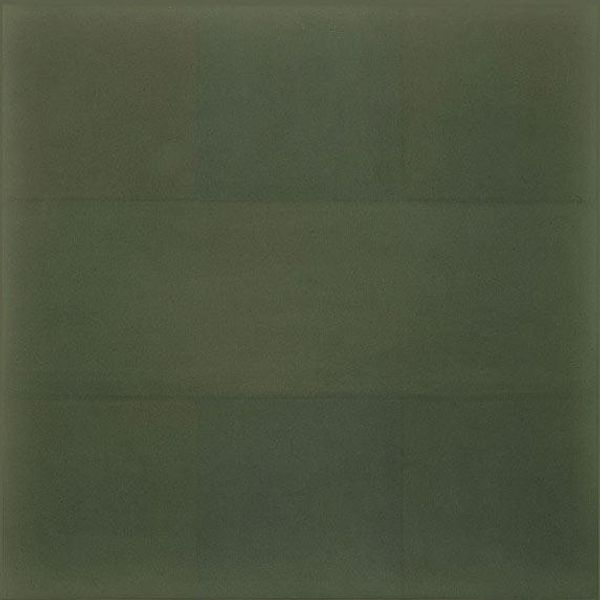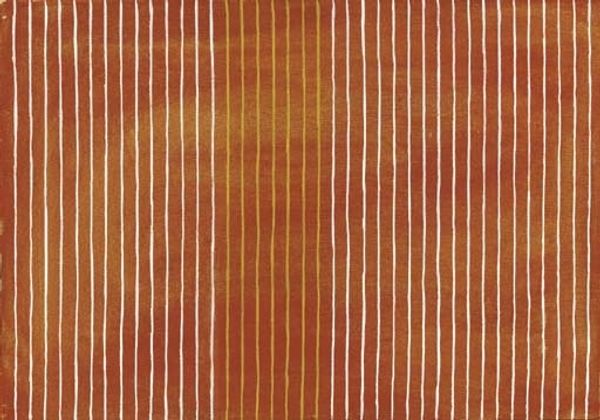
Copyright: Gottfried Honegger,Fair Use
Editor: So, this is Gottfried Honegger's *Étude A-22* from 1979, an acrylic painting. It's strikingly orange and geometrically simple. I am wondering though, it’s really just a grid, right? What should I be *seeing* here? Curator: More than a grid, I think. The grid itself is a powerful symbol, and its appearance across cultures tells us a lot. Do you recognize, perhaps, something beyond pure geometry? Think of a tiled floor, a mapped territory…even the layout of a planned city. Editor: Oh, interesting! It feels a bit like a blueprint now that you mention urban planning…so a very ordered space. Curator: Exactly! Honegger is inviting us to consider order, control, and how we impose structure onto the world. The monochrome amplifies this, doesn't it? Removing other distractions focuses us on the fundamental act of division and organization, and the color can signal an urgent feeling. What emotional connection do you think that gives this image? Editor: The color does impact how I see the whole painting, it’s kind of like a stop sign – simple but serious. I mean, this grid is undeniably *there*, but the subtle variations within each square stop it from being totally rigid. The hand of the artist shows. Curator: Precisely. This tension, that contrast between imposed structure and human touch…that's where the image lives, in my mind. These visual paradoxes tell a much greater story of how structure exists around us. Editor: It’s strange, but I hadn't considered how such a simple pattern could be so loaded with cultural significance. Curator: Indeed. The most seemingly straightforward images can hold layers of meaning.
Comments
No comments
Be the first to comment and join the conversation on the ultimate creative platform.

